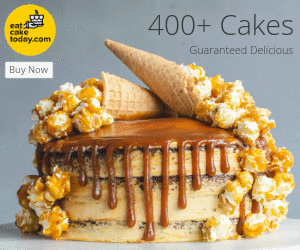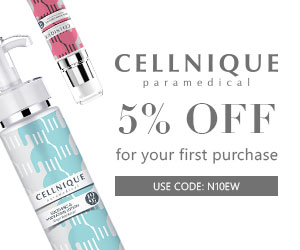Some of the most common ways to define a niche are based on:
• Price (luxury, moderate, discount)
• Demographics (gender, age, income level, education level)
• Level of quality (premium, moderate, economical)
• Psychographics (values, interests, attitudes)
• Geographics (residents of a certain country, city, or even neighborhood)
Niche marketing differentiates your business from the competition and allows you to excel in your sector. As a strategy, niche marketing is aimed at being a big fish in a small pond instead of being a small fish in a big pond.
Companies focus on niche markets to better cater to a specific consumer than competitors who target a broad audience. Catering to the unique demands that mainstream providers aren't addressing, businesses pursue niche markets to build loyalty and revenue with a underserved audience.
For example, rather than offering a general cleaning service, an entrepreneur might pursue a niche by offering floor polishing services exclusively. Another business in the same city might occupy a separate niche, specializing in solely biodegradable cleaning products.
The key to establishing a niche market is research. By diligently researching niche markets, a business can determine what unique segments already exist, and explore where new ones could be successfully developed. Once you've found a potential niche market, it's essential to think about whether it can become profitable.
If it's a niche market with no competition, it could be that businesses have already found it unprofitable or not worth the efforts. If there are a small number of similar products or services, that could be a sign that your idea is potentially profitable.
The trick to capitalizing on a niche market is to find or develop a segment that has accessible customers, room for growth, and no dominant competition.
1. Lesser Competition
When you target a niche market, you filter out the generic audience and focus on a special segment of the people. It has comparatively lesser competition than an ordinary market, given that it deals with a specific targeted demographic. It gives the business an opportunity to stand out from the rest of the businesses.
When you have a highly specific product or service, there will be less companies out there with the exact same offering. For example, there are millions of companies out there that sell knives. There are fewer companies that sell knives with handmade wooden handles, and yet fewer that offer customized knives with your initials on them.
2. Enhanced Customer Relationships and Brand Loyalty
Targeting a narrower audience also allows businesses to focus their efforts on catering to specific customer needs.
Because niche markets are small, businesses can more easily build brand loyalty by developing intimate, valuable relationships with clients. This can be done through more direct customer interactions, such as sending personalized emails and thank you cards, accommodating special requests, and offering custom services.
A small customer base has its benefits. When you are engaging with fewer people, you can focus on the quality of those engagements and on nurturing your relationships. Your emails can be more personalized and your follow ups more diligent. You can also accommodate special requests, offer custom services, and get to know your customers on a more individual level. Each of these practices will enable you to better serve your customers, further enhancing your relationship with them and solidifying their loyalty to you.
You can always create loyal customers if you are dealing in a niche market. As it is difficult to find niche products, so customers usually stay with the brands which are already offering those products. Niche marketing lets you provide those products and services to a consumer which they need or desire the most and it is hard for them to switch to another brand.
Strong relationships with niche customers which further protects businesses from competitive threats.
3. Minimizes Marketing Expense
As niche marketing is targeted towards a specific group, so you could concentrating all marketing efforts on a small but specific and well-defined segment of the population.
Marketing to a niche market is usually cheaper and less time consuming than trying to appeal to a broader audience. This is because it takes less time and money to develop and market a product or service, and provide customer service that caters to a smaller group of people.
On the flip side, targeting a larger audience means that you need to tailor what you sell to many different audiences that differ extensively in demographics and psychographics.
You can achieve brand saturation within a niche market in a way that you never could within a broad market without spending millions of dollars.
For example, if you sell backpacks, there are countless types you could offer, and if you try to offer them all, it's going to be virtually impossible to please all customer types. However, suppose you focus on backpacks designed for avid hikers who go on multi-day trips and camp outside. In that case, it becomes much easier to concentrate your efforts on making the best possible product for that consumer.
4. Word-of-Mouth Marketing
People in a niche tend to be in frequent contact with others in that niche, which means more opportunities to get the word out about your business. For example, expectant mothers attend prenatal fitness programs, take childbirth education classes, and shop at maternity clothing stores, where they meet many other expecting mothers.
This brings an element of promotion for your products and services. If you’re doing a good job, people in your niche will spread the word to others, which is the most powerful form of marketing. The more they are satisfied, the more they will spread the word of mouth.
For example, if you are a prenatal yoga instructor, your current customers will be some of your best marketers. The better you serve them, the more likely they are to recommend, and maybe even rave about, your services to their many fellow expectant mothers.
5. Honed Expertise
Ever hear the expression, jack of all trades, master of none? It essentially means that a generalist can do everything decently, while a specialist does one thing extremely well. The same holds true when you’re retailing.
The firm’s competitive advantage comes both from its expertise and from having a high market share of a relatively small market segment. Focusing on a niche market affords you the opportunity to become really good at one specific thing. The better you are at what you do, the more you are considered an expert or leader in your market. The customers are prefer to buy or work with the most experienced or well-regarded business in the market.
For most customers, expertise is more important than size or brand name. A small law firm that specializes in immigration may be chosen over a larger law firm with a familiar name. When it comes to legal, financial, or health services, people want the business that has the most knowledge and experience in their area of concern.
1. Identify Your Target Audience
The first thing which is required to cater to a niche is to find a specific audience. You need to know who you want to cater to before deciding to get into it.
With whom do you want to do business? Be as specific as you can. Identify the geographical range and the types of businesses or customers you want your business to target. If you don't know whom you want to do business with, you can't make contact.
2. Choose the Area You Want to Focus On
Once you identified the audience you want to target, the next thing you need to do is to choose the focus area. Some people usually make the mistake of choosing the area with the highest growth.
You need to see what you are good at. A person who has experience in selling pharmaceutical products might want to get into manufacturing, but this won’t be a perfect idea. The perfect idea would now be to cater to a specific audience. Let’s say, to cater patients with anxiety issues.
3. Identify Unserviced Pain Point or Underserved Consumer Needs
What pain or passion is enough of an irritant or desire for your niche market that they’re willing and able to pay a premium to alleviate it? Find the problem, solve it, and present the solution.
Products focused on a broad category may not meet the needs of many of its members. Imagine if only one kind of shampoo was available. No matter what type of hair it was great for, it would not suit all hair types.
Your products or services should soothe a pain point that your audience is currently experiencing. Providing a product or service for an underserved audience is an excellent opportunity to build a brand and consumer loyalty.
At this stage, you need to do proper research work in order to find the underserved needs of target audience. You need to look for something which they want but are not able to get that easily.
4. Evaluation
After all the research work and aspects, you have considered, you now need to evaluate the whole thing again. You need to see whether the audience you have chosen is right or not. Or whether the needs of a consumer which were being ignored, have potential or not.
5. Perform Keyword Analysis
Once you have discovered a niche that you are interested in, you need to determine if enough other people are interested in it that it can support a business. A great way to do this is by evaluating the internet and social media traffic around keywords related to your niche market.
There are several tools you can use to evaluate the search volume for specific keywords:
√ Google Keyword Planner
√ UberSuggest
√ Google Trends
While doing keyword research, keep in mind related terms that pop up, as these provide insight into other interests within your niche market. Google Keyword Planner also shows you how competitive each keyword is. If there is a lot of competition, your market might not be as niche as you thought. Also keep in mind the popularity of keywords over time, as this can show you if interest is rising, falling, or seasonal.
If a keyword has under 500 searches per month, you are facing an uphill battle in terms of demand. Ideally you want between 1,000 – 2,000 searches per month. With a number like that, you can test your product without burning through cash.
Checking social media websites like Facebook and Instagram can also provide a window into the interest in a particular niche topic. Check to see if there are a significant number of people posting about your niche, and if there are online groups where people discuss topics related to your niche. These people make ideal targets if your business decides to launch a social media marketing campaign.
6. Do Test Marketing
After evaluation and keyword analysis, does a test run. Pick a specific area of your targeted audience and try to sell them your product or service. This will give you an idea about how well your product or service is going to do in the chosen market before doing the actual launch.
7. Start Small
Test before you invest. Start with a small batch of products and run a campaign to your targeted audience. Solicit feedback from customers who’ve made the first purchases, or send a few out to influencers and ask them what they think. It’s important to get feedback early on, especially if you’re developing a new product, so you can perfect it before it goes out to the rest of the world.
1. Bee’s Wrap
Sustainability has become a hot topic among consumers of late. The rise of the conscious consumer has paved the way for vegan, eco-friendly, and cruelty-free variations of conventional products. If there is a product that is frequently purchased by the mass market, there is likely a niche of conscious consumers that will embrace a greener alternative.
Bee’s Wrap, for example, is looking to replace plastic wrap with options made from beeswax. The natural alternative to food storage is not only environmentally friendly, but also more cost-effective for consumers because they’re reusable.
2. Divvies Vegan and Nut Free
There are hundreds of brands that sell sweet treats and snack foods such as cookies, brownies, popcorn, and cupcakes. While most people can choose from dozens of brands to find options that satisfy their cravings, there is a group of people who cannot. Those people have allergies or food restrictions that relate to animal products and nuts.
Divvies saw this underserved market segment in the sweets industry and created a brand that exclusively targeted this group. Selling cookies and cupcakes is not a unique idea, but selling them as vegan and nut-free options differentiated Divvies in an already saturated market, allowing them to stand out and build a loyal customer base.
3. Lefty’s: The Left Hand Store
Based in San Francisco, Lefty’s is a left-handed retail store that sells school supplies, kitchen goods, and gardening tools, and more for lefties. They even offer custom gift sets for the left-handers in your life.
Only 10% of the population is left-handed, making lefties a natural niche market.
Identifying an underserved community in a large market is a smart way to approach niche marketing. Lefty’s found a widely underserved community of people – those who favour their left hand instead of their right hand.
Because 90% of the population uses its right hand, left-handers have widely had to adjust to using products designed for “righties”. Lefty’s saw this as an opportunity. They created a store that sells products designed exclusively for the other 10% and found success reaching this smaller, often ignored audience.
Lefty’s has just one retail outlet in San Francisco, but it has an extensive online presence. The company makes use of keywords to rank highly in Google searches, and utilizes pay-per-click (PPC) advertising too. Because of those efforts, Lefty’s has become an expert resource on left-handed products.
4. UNTUCKit
UNTUCKit devises the creative ways to create a new space in a long-established market segment. By making even just a small change, you can build a whole new sector in a traditional space.
UNTUCKit focuses on serving a specific community of people: those who didn’t like to tuck in their shirts.
5. Facebook
Although, in its current form, Facebook is not a niche product. However, Facebook was launched as a highly-targeted niche service: an online site for Harvard students to make connections and share photos.
After success on Harvard’s campus, Facebook expanded to colleges and universities across the U.S. and then it became the ubiquitous social media platform we know today, available to everyone around the world. This is a prime example of how honing your product or service with a small group of users can prepare it to launch to a wider audience.
6. Georgetown Cupcake
A bakery that only bakes cupcakes.
After leaving their corporate jobs, sisters Katherine Kallinis Berman and Sophie Kallinis LaMontagne decided to pursue their passion for baking and opened up Georgetown Cupcake. Unlike other bakeries that create cakes and other sweets, their sole product is cupcakes and they were able to perfect their recipes by focusing on one product type.
7. Dorm Mom
A cleaning service for college students.
Rather than catering to a large population of people in need of home cleaning, Dorm Mom's niche market is college students. Its offerings include dorm cleaning and laundry services.
8. Ties.com
A clothing store that sells men's accessories.
In the broader market of menswear, Ties.com stands out by only selling accessories like ties, socks, pocket squares, etc. Since their products make up a small portion of the menswear industry, they stand out from the competition by creating unique, high-quality accessories.
9. Kaioptics
This American-based online eyewear seller solves a problem that many Asian-American people face: poor-fitting eyeglasses. Kaioptics sells only Asian-fit eyewear. They sell their glasses online and most frames are priced under $100. Access to affordable, well-fitting eyewear that can be bought online is proving to be exactly what the Asian-American eyewear-buying niche wants.
Final Thoughts
In order to stand out from the competition, you need to find a small pond in which you can be a big fish. If you compete for everything, you’re going to win at nothing. However, if you pick one area to concentrate on, you can focus your efforts and stand out in your market.
Edited by: 浪子
Bibliography
Alexandra Sheehan. (2019). Finding Your Niche: 8 Niche Market Examples to Inspire You. Retrieved from https://www.shopify.my/blog/niche-markets
Niche Market. (2020). Retrieved from https://en.wikipedia.org/wiki/Niche_market
Susan Ward. (2020). What is a Niche Market? Retrieved from https://www.thebalancesmb.com/niche-market-definition-for-business-2947188
Kim Kosaka. (n.d.). Here’s How to Handle Niche Marketing. Plus, 3 Examples to Get You Started. Retrieved from https://blog.alexa.com/niche-marketing/
Tejvan Pettinger. (2017). Niche Products. Retrieved from https://www.economicshelp.org/blog/12381/business/niche-products/
Niche Marketing. (n.d.). Retrieved from https://sproutsocial.com/glossary/niche-marketing/
Sarita Harbour. (2018). What is Niche Marketing? And How to Win Your Market. Retrieved from https://blog.taboola.com/niche-marketing-win-market/
Niche Market. (n.d.). Retrieved from https://www.oberlo.com/ecommerce-wiki/niche-market
Emily Carter. (2020). 9 Niche Marketing Examples. Retrieved from https://www.webfx.com/blog/marketing/9-niche-marketing-examples/
Niche Marketing. (n.d.). Retrieved from http://www.businessdictionary.com/definition/niche-marketing.html
Sara Eisenberg. (2019). 10 Examples of Highly Effective Niche Marketing Strategies. Retrieved from https://www.wrike.com/blog/niche-marketing-strategies/
Meredith Hart. (2019). The 5-Step Process for Finding Your Business's Ideal Niche Market. Retrieved from https://blog.hubspot.com/sales/niche-market
Azam Iqbal. (2019). What is a Niche Market Example and Strategy – Complete Guide. Retrieved from https://azamiqbal.com/blog/what-is-a-niche-market-example-and-strategy/
Lisa Steinmann. (2019). Should Your Business Focus on a Niche Market? Retrieved from https://www.microsoft.com/en-us/microsoft-365/business-insights-ideas/resources/business-focus-on-niche-market
Skye Schooley. (2019). How to Find Your Business Niche. Retrieved from https://www.businessnewsdaily.com/6748-business-niche-characteristics.html
Matthew Speiser. (2020). Niche Market: Definition, Examples, and How to Find One for Your Business. Retrieved from https://www.fundera.com/blog/niche-market
Niche Marketing. (n.d.). Retrieved from https://www.segmentationstudyguide.com/understanding-target-markets/niche-marketing/
Kristen McCormick. (2016). 7 Benefits of Niche Marketing. Retrieved from https://thrivehive.com/niche-marketing-small-business/
Satyam. (2020). 11 Trending Ecommerce Niche To Target In This Pandemic. Retrieved from https://makewebbetter.com/blog/trending-ecommerce-niche/
Niche Marketing. (n.d.). Retrieved from https://www.entrepreneur.com/encyclopedia/niche-marketing
Janette Novak. (2019). How to Find a Niche Market in 4 Simple Steps. Retrieved from https://fitsmallbusiness.com/how-to-find-niche-market/
Riches in the Niche Market
 Reviewed by 浪子
on
August 31, 2020
Rating:
Reviewed by 浪子
on
August 31, 2020
Rating:
 Reviewed by 浪子
on
August 31, 2020
Rating:
Reviewed by 浪子
on
August 31, 2020
Rating:





















